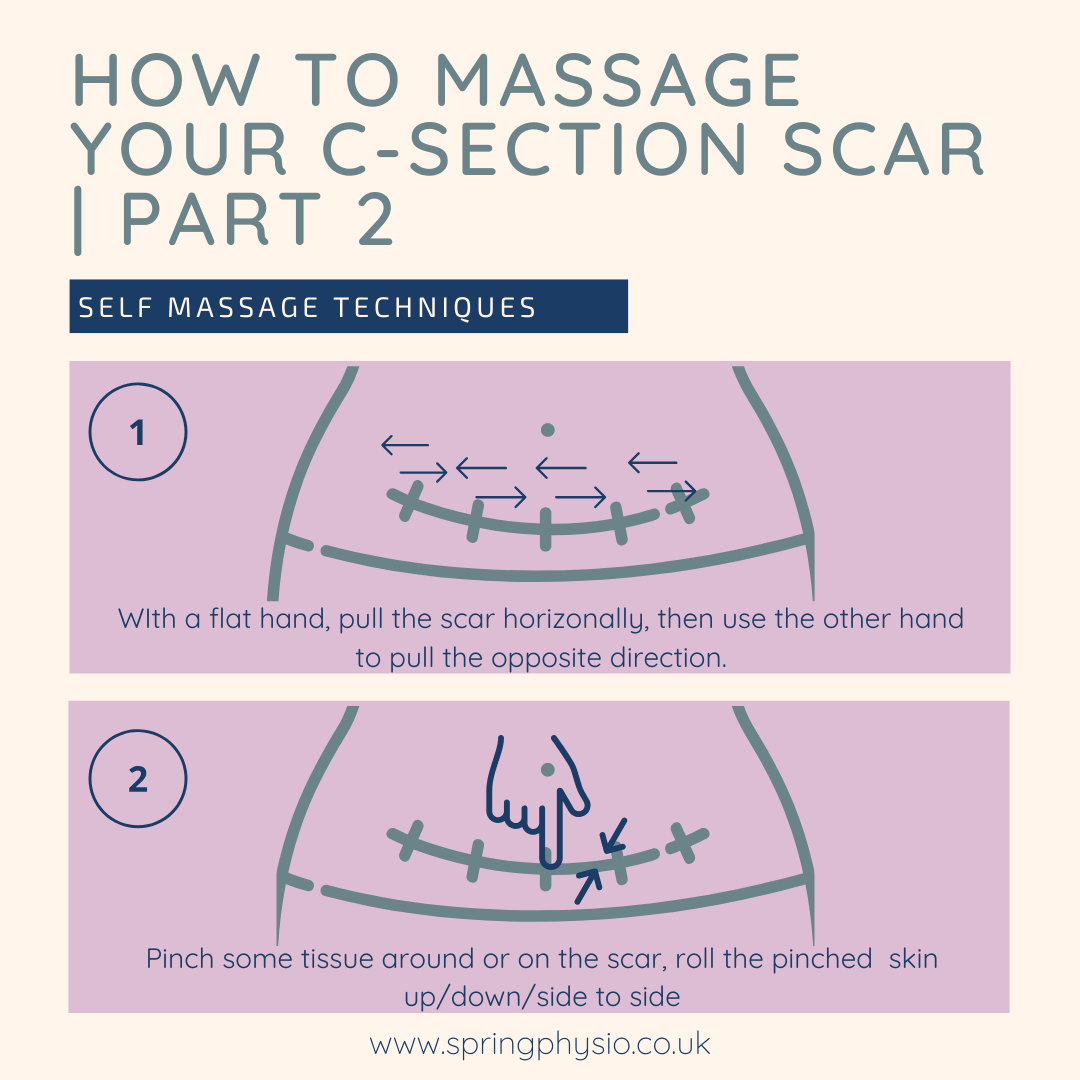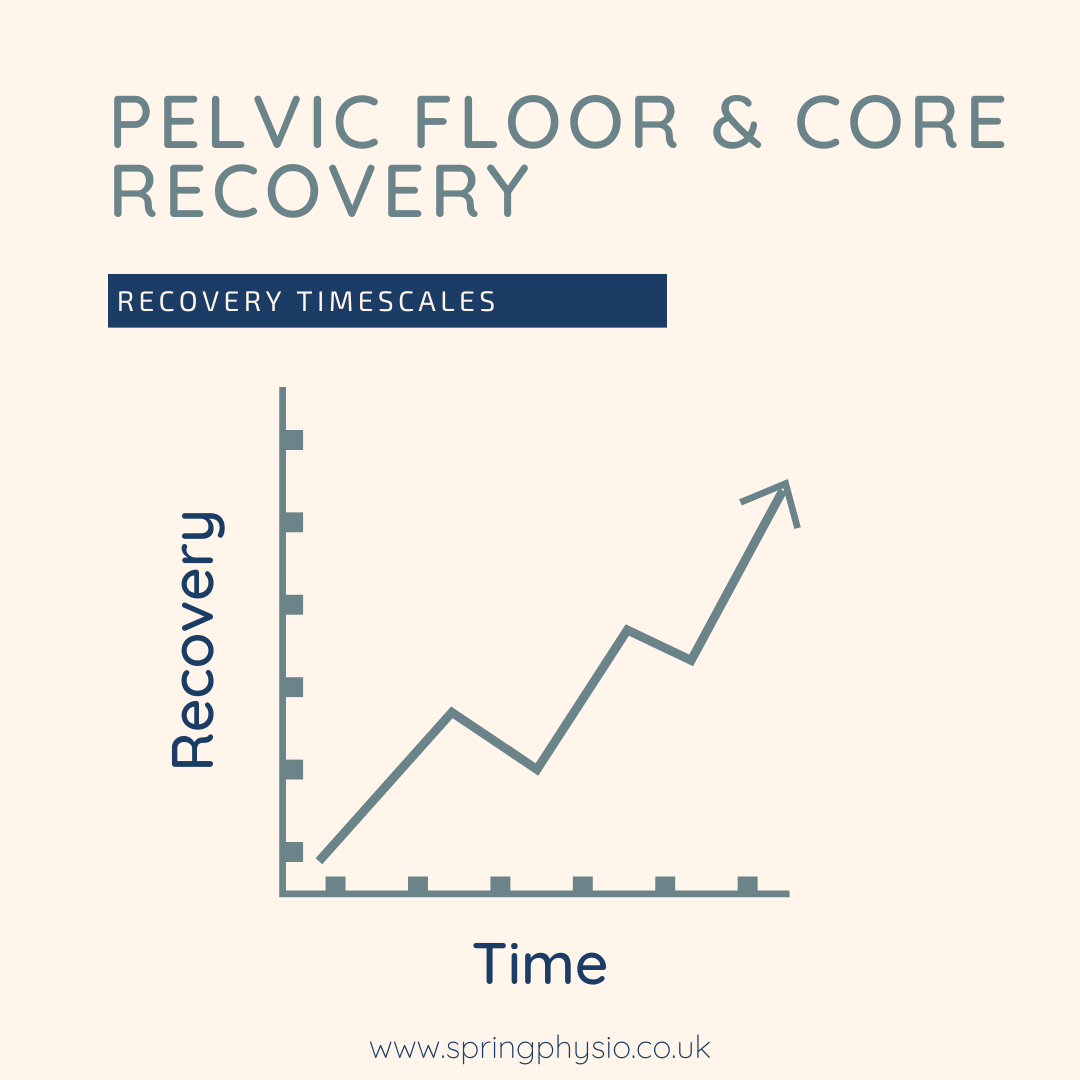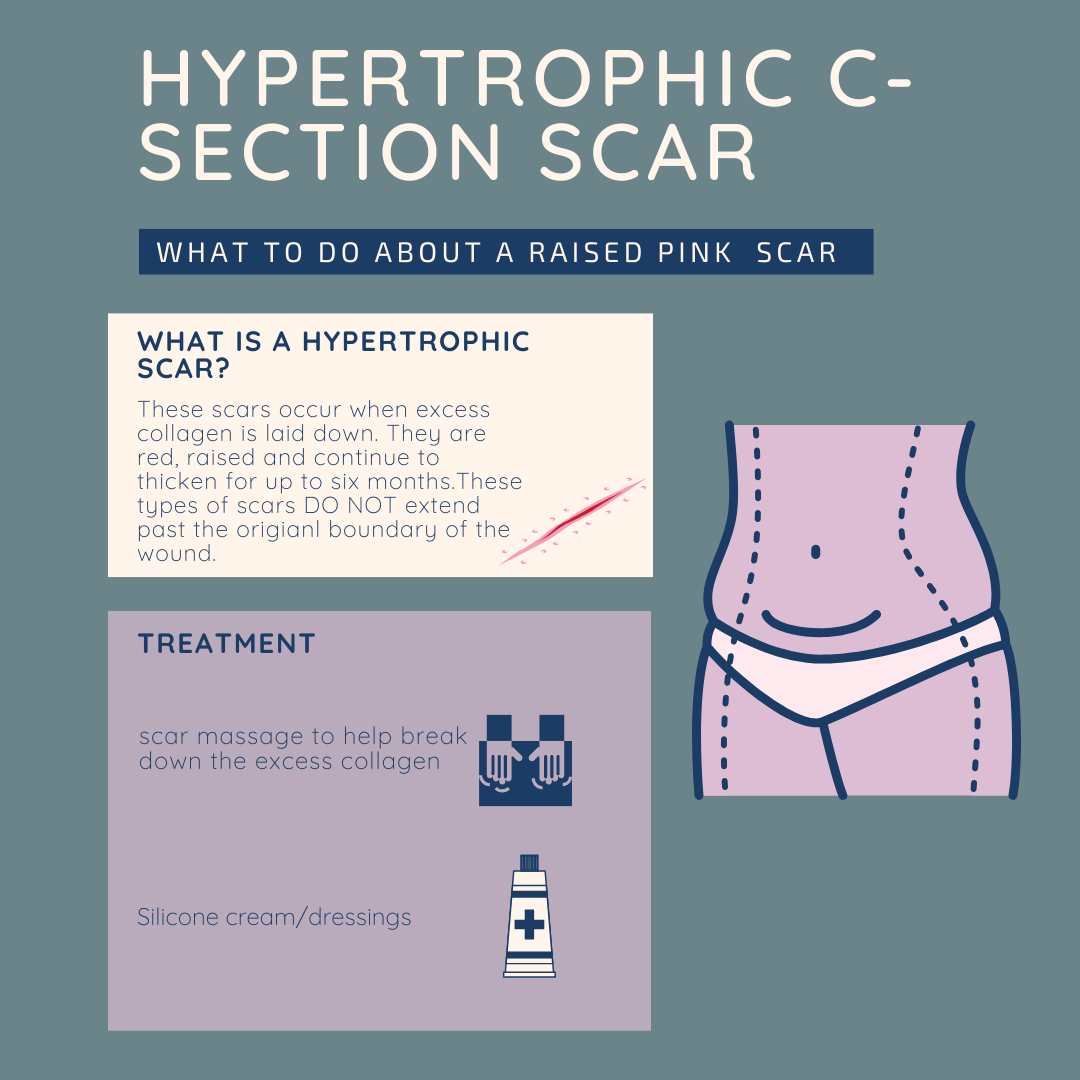|
Wait at least 6 weeks before starting scar massage. The wound should be completed closed - If you are unsure whether it is healed enough consult your GP or a women's health physio. There is no need to use expensive scar oil; any non fragranced moisturising cream or oil is great. 👍 Your scar may be sensitive to begin with, so start massaging away from the scar and then as you get used to the feeling you can work closer to the scar itself. Your scar tissue is not limited to the scar itself, so it's important to work around the scar on an ongoing basis. Increase the pressure gradually, and spend a couple of minutes on each technique. Here are some final self massage techniques. This is one of my favourites, because it is done with movement. I find it super effective at improving the mobility of the scar. Often clients report an immediate change when I use this technique in clinic. Start on one side of the scar doing a few strokes and then move along the scar, repeating the same technique until you’ve covered the whole scar.
2 Comments
 Carpal tunnel syndrome is a fairly common problem in pregnancy. The good news is that it normally settles post pregnancy as fluid around your body reduces. But that doesn’t stop it being an incredibly irritating problem in pregnancy, especially at night when you are trying to sleep! Here are my top tips for symptom management in pregnancy.
It can be frustrating when recovery doesn’t go quite to plan. Almost every woman I’ve treated has had at least one blip along the way. Whether it’s increased pain from a c-section, worsening prolapse symptoms or leaking when you have a bad cold, it can be really disheartening. But the thing is, we are not robots! Lack of sleep, nutrition, stress and a change in activity can all cause a flare up of symptoms. But that doesn’t mean all is lost. Keep going on your treatment plan and you will find progress does resume! Sometimes you may find you need to take your rehab level back down a step before increasing it again once your flare up settles.
The NICE guidelines recommend a three month physiotherapy exercise programme for prolapse, because research has found that we need to play the long game! Whilst commitment is required, most women find that a course of physiotherapy is effective to manage their prolapse. Pink and raised scars are pretty common... and people tend not to realise that there is something that can be done about them! Both these treatments can be carried out at home once your physiotherapist has explained how to implement them.
Silicone comes in many forms - invisible gels, plasters and dressings. Some are available on prescription from the GP or you can purchase yourself from amazon. Ensure you use the instructions on use because silicone can sometimes cause skin sensitivity. Scar massage is important because it helps to break down the excess collagen and mobilise the surrounding tissue. Your Physiotherapist can show you different massage techniques that you can carry out at home. There are other in clinic options such as laser treatment, but these options are a great place to start. So, you had your C-section, stayed a couple of nights in hospital and got discharged with (if you're lucky) a leaflet about recovery. You walked around hunched over for a few days (or weeks) and eventually started to feel better. Frankly given that you had a newborn to look after, you were just thankful for the fact that you could now lift the baby pain free! With some much going on, you probably didn't give it much further thought during this early recovery period (this was certainly my experience).
A weak core and a non - mobilised scar can lead to an overhang. Women assume nothing can be done to improve this... but there is plenty! However, it does require commitment and perseverance as changes don't happen over night. Scars are still healing and remodelling 18-24 months after surgery so there is lots of time to manipulate change. Even if you are further down the line, it is still worth massaging your scar if you haven’t done it before. Tissues don’t stop responding to mobilisation until a joint is fused! The overhang isn’t only caused by the scar, so a holistic approach to treatment with appropriate core strengthening will yield the best results. Any scar can become hypertrophic. This means that the scar is red and raised. In this case silicone can be a useful treatment to improve the colour and flatten the scar. It is worth asking your Physio or GP to review your scar and see if silicone would beneficial. |
AuthorClaire is a women's health and sports Physiotherapist. She is the owner of Spring Physio and is based in East Sussex. Archives
April 2024
Categories
All
|







 RSS Feed
RSS Feed